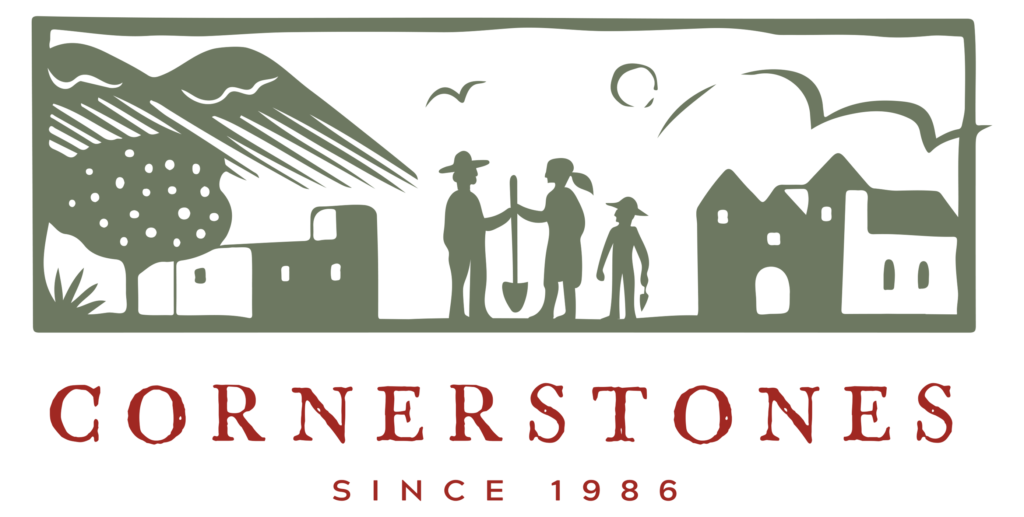Adobe Construction: A Tour of the Past, Present, and Future with The Earthbuilders’ Guild
Cornerstones is part of a community of practice that is passionate about earth construction. On a sunny Saturday last month, I attended a tour organized by The Earthbuilders’ Guild. The Earthbuilders’ Guild preserves and promotes the age-old building methods of adobe, rammed earth, and compressed earth block construction. This group joins examinations of history with innovative applications of earthen architecture.
The two projects on the tour wonderfully compare and contrast passions common in the earthbuilding community—the restoration of an important part of a community’s heritage and the realization of a nearly life-long dream with a newly built private home. Follow along on the Earthbuilders Guild Tour!
Photo of the Corrales Old Schoolhouse by Tracey Enright.
Repairing Lime Kilns that built Tucson in Saguaro
Saguaro National Park—outside Tucson, AZ—has six historic lime kilns within its boundaries. Communities around the world once used large stone structures like these to burn limestone, transforming it into a reactive state. Limestone, after it was burned, was hydrated and crushed into quicklime, a material useful for masonry work. As a National Park Service Resource Brief by Saguaro National Park notes, “The earliest use of lime dates to present-day Turkey between 7,000 and 14,000 years ago, and many ancient civilizations used it to create mortar to hold stones together.”
The kilns in Saguaro only date back to the late nineteenth century. They provided essential lime for whitewashing, plastering, and mortaring the then up-and-coming City of Tucson, first built as a military fort by the Spanish in 1775, later acquired by the US in 1853. As was the case around Tucson, stonemasons constructed kilns near limestone deposits, often into hillsides. Each kiln bottom contains a hearth that would heat an above, enclosed vault lined with adobe bricks or stone. The vault contained the limestone “charges.” Charges would be fired for four days and four nights, using up to 15 cords of wood, all to produce a single batch of usable lime.
Our field project manager and stonemason Alan Ash led efforts to repair the Saguaro kilns in workshops occurring last year and this January. For the Wyss Lime Kiln, one of the six that needed skillful attention, the first task for rebuilding was gathering stones that had fallen out of the kiln walls. These stones and others that matched the originals reconstructed the stone kiln’s walls. Rebuilding also involved excavating stones and walls, resetting stones in their original locations, repointing the joints, and finally setting capstones. Alan and his team used natural hydraulic lime to repair mortars.
Our team carried out these training workshops to provide additional longevity to the kilns, once crucial to the burgeoning settler community of Tuscon. Many visitors hike to the kilns to imagine the technological challenges of the past - challenges so far removed from our times, where home improvement stores readily supply many mortars for construction. We’re grateful for all of Alan’s efforts, the assistance and ongoing work of Saguaro National Park, and our volunteers. We also appreciate those who marvel with us at the preservation of historic building technologies, such as these kilns, and all they can teach us about the past.
Photos of the Wyss Lime Kiln by Alan Ash.


